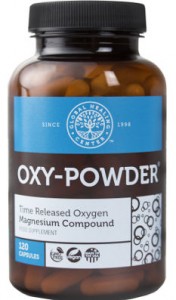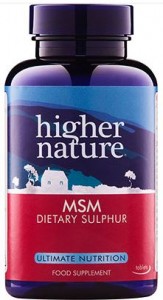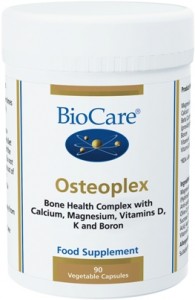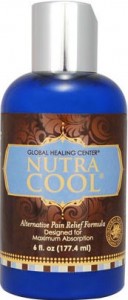Aloe vera? Many of us have heard of it, haven’t we? Familiar thanks to its mention as an ingredient in skin creams and cosmetic products in so many TV ads, aloe vera (also called aloe barbadensis) is in fact a succulent plant species originating from various tropical parts of the world that’s been a health staple for millennia in many different cultures. As such, it’s been used to soothe burns, moisturise skin and heal small wounds for hundreds of years.
Today, though, it’s sometimes referred to as a ‘superfood’. Now, you may feel this sounds like a bit of advertising bunkum, but it surely can lay claim to such a lofty title thanks to the 200-plus vitamins, minerals and antioxidants it contains. Yes, really; it does contain that many.
To begin with, it’s packed full of Vitamin A (great for healthy teeth, bones, skin and eyes), Vitamin C (for skin health, energy creation and immunity), Vitamin E (for skin protection from UV damage), Vitamin B12 (for nerve and brain cell health), folic acid (for brain and liver health and energy creation) and choline (for memory, focus and maintaining a positive outlook).
Moreover, aloe vera contains calcium, chromium, copper, selenium, magnesium, manganese, potassium, sodium and zinc; all of which play a critical role in hormone balance, cellular reproduction and strong immunity. And it also features a long list of enzymes (which together aid digestion, toxin removal and energy creation), including alliinase, alkaline phosphatase, amylase, bradykinase, carboxypeptidase, catalase, cellulase, lipase and peroxidase.
Indeed, it’s aloe vera’s varied nutritional benefits (thanks to all these ingredients and away from merely combating wrinkles and healthy skin) that the public tends to be less aware of and what we’re interested in here. So let’s take a closer look at a few of them…
Immunity
To combat infection effectively, our immune systems require oxygen-rich blood and, by supporting nutrient absorption, aloe vera plays a key role in ensuring they get it1.One way in which it does this is the detoxifying role it plays in ensuring bowel regularity to aid normal digestive tract function2. Aloe vera also works to keep cells in balance and functioning well (not least when the body experiences stress), which aids the immune system’s efficacy3, as does the fact it’s jam-packed with sugar-rich carbohydrates called polysaccharides4 and antioxidants that combat free radicals5.
Digestion
Among all its terrifically health-giving ingredients, aloe vera also contains the digestion-supporting enzymes amylase (which aids in the break-down of carbohydrates, sugars and starches) and lipase (which contributes to digesting fat); both aid a normal environment in the gut through helping to maintain balanced levels of stomach acid5, 6.
Meanwhile, studies suggest it also helps with ulcerative colitis (UC), the painful condition that sees ulcers take root in the intestines. The results of a clinical trial reveal that nearly half (46%) of a group of UC sufferers enjoyed an improvement in their symptoms after taking aloe vera7. And don’t overlook the contribution it can make to addressing irritable bowel syndrome (IBS) – symptoms of which include abdominal pain, constipation and diarrhoea – for reports suggest people have gained relief from IBS symptoms following consumption of aloe vera8, 9.
Cardiovascular
Keeping down the levels of the low-density lipoprotein (LDL) cholesterol in your body’s important for the health of your heart and blood vessels and compounds known as phytosterols, which aloe vera’s also rich in, can contribute greatly here10. Indeed, a five-year long study has found that patients suffering from heart disease who consumed aloe vera enjoyed better cholesterol and blood sugar numbers than those who received none over that period of time11, 12.
Teeth and mouth
And, finally, recent research suggests you could use aloe vera in fluid form to keep your teeth and gums healthy13, while aloe vera in gel form’s useful in fighting candida albicans, a fungus that can commonly afflict the mouth14.
Supplements
So, hopefully convinced as you are now of its vast array of health benefits; how can you best get your hands on aloe vera? Well, a great way to consume this ‘superfood’ is through aloe vera supplements. The following are all examples available through The Finchley Clinic that we highly recommend:
Aloe Gold Natural (485ml and 1,000ml) – made from whole-leaf aloe vera and contains more than 20 times more important nutrients than most other aloe juices and gels.
Aloe Gold Cherry/ Cranberry (485ml) – blends Aloe Gold juice (93%) with unsprayed cherry or cranberry juice (7%) to provide a delicious flavour; cranberry is renowned for supporting the urinary tract.
Herbal Aloe Vera Ear Drops (30ml) – great for soothingly cleansing the ear canal and suitable for young and old, among them frequent swimmers, hearing aid wearers and allergy sufferers.
References:
1 Benzie, I. F. F. and Wachtel-Galor S. ‘Herbal Medicine: Biomolecular and Clinical Aspects’. Boca Raton: CRC, 2011.
2 Barcroft A. and Myskja A. ‘Aloe Vera: Nature’s Silent Healer’. London: BAAM, 2003. Print.
3 Rahmani A. H, Aldebasi Y. H., Srikar S., Khan A. A. and Aly S. M. ‘Aloe vera: Potential candidate in health management via modulation of biological activities’. Pharmacognosy Reviews. 2015; 9 (18): 120-126. doi:10.4103/0973-7847. 162118.
4 Tong H., Tian D., Li T., Wang B., Jiang G. and Sun X.. ‘Inhibition of inflammatory injure by polysaccharides from Bupleurum chinense through antagonizing P-selectin’. Carbohydr Polym. 2014 May 25;105:20-5. doi: 10.1016/j.carbpol.2014.01.039. Epub 2014 Jan 21.
5 Surjushe A., Vasani R. and Saple D. G. ‘Aloe Vera: A Short Review’. Indian Journal of Dermatology. Medknow Publications, n.d. Web. 12 Feb 2016.
6 Keshavarzi Z., Rezapour T. M., Vatanchian M. et al. ‘The effects of aqueous extract of Aloe vera leaves on the gastric acid secretion and brain and intestinal water content following acetic acid- induced gastric ulcer in male rats’. Avicenna Journal of Phytomedicine. 2014; 4 (2): 137-143.
7 Langmead L., Feakins R. M., Goldthorpe S., Holt H., Tsironi E., De Silva A., Jewell D. P. and Rampton D. S. ‘Randomized, double-blind, placebo-controlled trial of oral aloe vera gel for active ulcerative colitis’. Aliment Pharmacol Ther. 2004 Apr 1; 19 (7): 739-47.
8 Khedmat H., Karbasi A., Amini M., Aghaei A. and Taheri S. ‘Aloe vera in treatment of refractory irritable bowel syndrome: Trial on Iranian patients.’ Journal of Research in Medical Sciences: The Official Journal of Isfahan University of Medical Sciences. 2013; 18 (8): 732.
9 Størsrud S., Pontén I. and Simrén M. ‘A Pilot Study of the Effect of Aloe barbadensis Mill. Extract (AVH200®) in Patients with Irritable Bowel Syndrome: a Randomized, Double-Blind, Placebo-Controlled Study’. J Gastrointestin Liver Dis. 2015 Sep; 24 (3): 275-80. doi: 10.15403/ jgld.2014.1121.243.sst.
10 Ostlund R. E. Jr. ‘Phytosterols and cholesterol metabolism’. Curr Opin Lipidol. 2004 Feb; 15 (1): 37-41.
11 Agarwal O. P. ‘Prevention of atheromatous heart disease’. Angiology. 1985 Aug; 36 (8): 485-92.
12 Tanaka M., Misawa E., Ito Y., Habara N., Nomaguchi K., Yamada M., Toida T., Hayasawa H., Takase M., Inagaki M. and Higuchi R. ‘Identification of five phytosterols from Aloe vera gel as anti-diabetic compounds’. Biol Pharm Bull. 2006 Jul; 29 (7): 1418-22.
13 Karim B., Bhaskar D. J., Agali C., Gupta D., Gupta R. K., Jain A. and Kanwar A. ‘Effect of Aloe vera mouthwash on periodontal health: triple blind randomized control trial’. Oral Health Dent Manag. 2014 Mar; 13 (1): 14-9.
14 Sujatha G., Kumar G. S., Muruganandan J. and Prasad T. S. ‘Aloe Vera in Dentistry’. Journal of Clinical and Diagnostic Research: JCDR. 2014; 8 (10): ZI01-ZI02. doi:10.7860/ JCDR/ 2014/ 8382.4983.

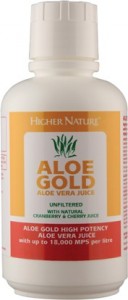
 We’ll keep this one brief. We’ve got up to 70% off on a number of clearance items (due to short expiry dates) in our summer sale. The full list is found
We’ll keep this one brief. We’ve got up to 70% off on a number of clearance items (due to short expiry dates) in our summer sale. The full list is found 